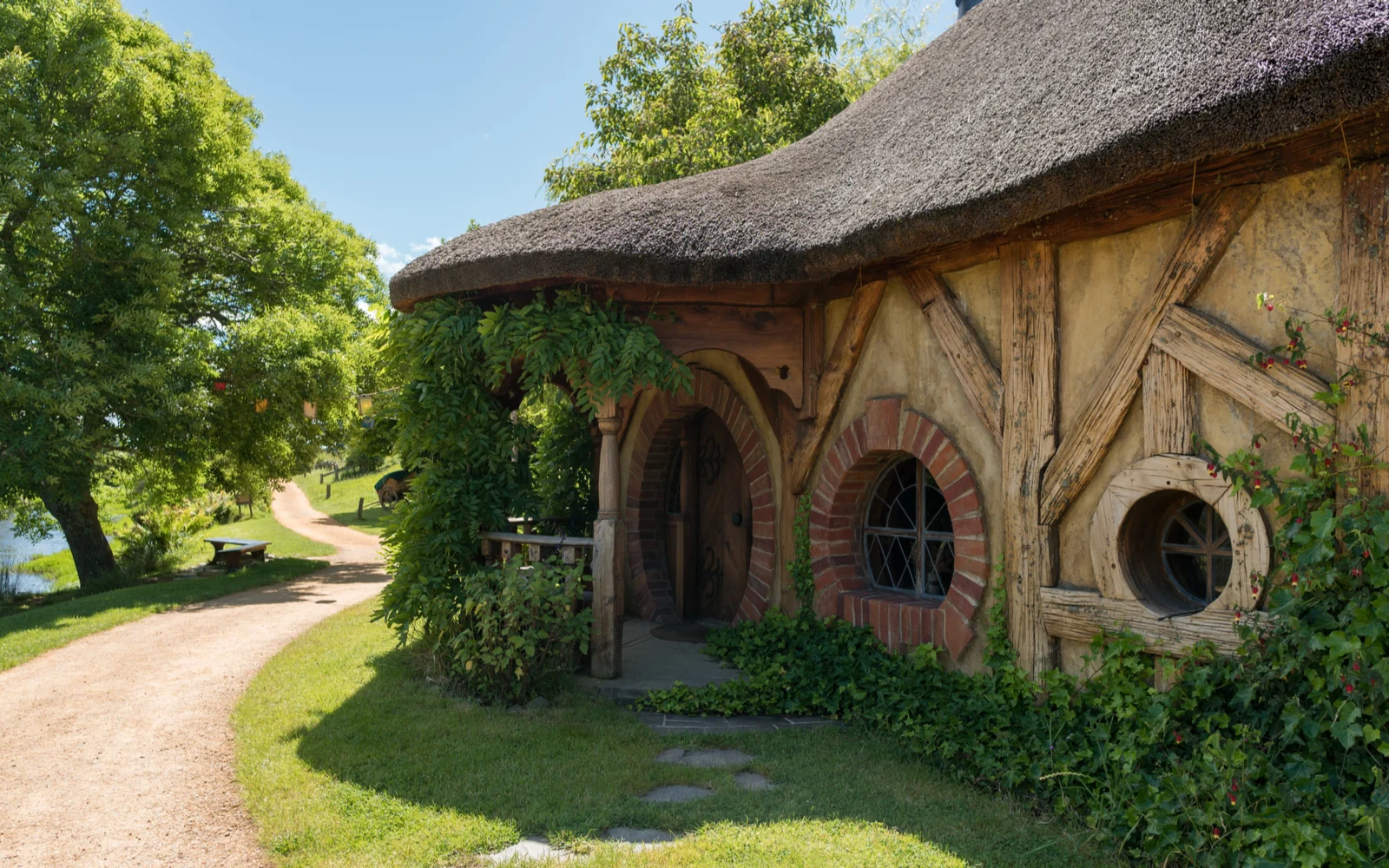Everybody old enough remembers where they were or what phase of their lives they were in when Lord of the Rings (LOTR) came out.
One of the primary reasons for such strong memory associations is the filming locations. Most people know the breathtaking scenery was all in New Zealand, but where?
Where Was Lord of the Rings Filmed?
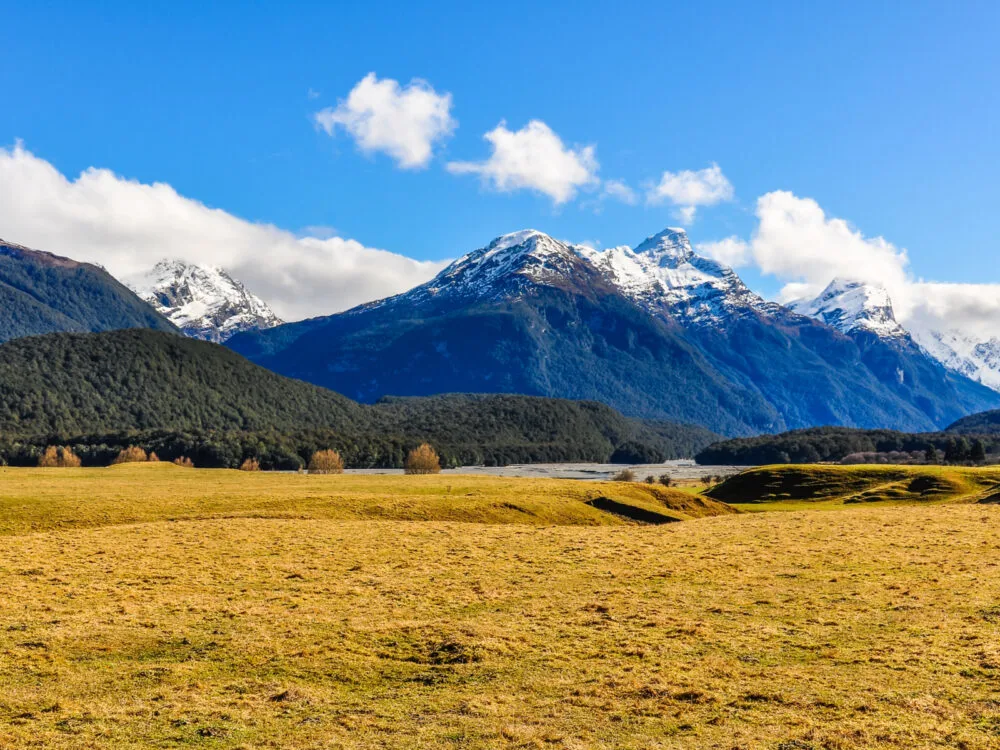
Gabor Kovacs Photography/Shutterstock
All the filming took place in New Zealand, a country made up of two primary islands — North Island and South Island. The director, Peter Jackson, had the distinct advantage of being a native of New Zealand.
He knew, full well, that the stunning scenery was perfect for the re-creation of the beloved classic by J.R.R. Tolkien, The Lord of the Rings, set in Middle Earth.
Peter Jackson traveled all over the country looking for the perfect sets and found the majority on the South Island. Near his childhood home outside Wellington, he also managed to find some great locations.
Everything was ready with locations nailed down, script in hand, and actors chomping at the bit. All that was left was the mammoth task of filming a masterpiece using New Zealand’s jaw-droppingly beautiful landscape.
Some of the main areas that Lord of the Rings was filmed include:
- Tongariro/Taupo Region. The first region Jackson selected was the Tongariro, also known as the Taupo, region.
- Matamata. Matamata is nothing more than a city that happens to be close to an important bit of farmland in the middle of nowhere on New Zealand’s North Island.
- Wellington Region. The Wellington area seemed to have everything the films needed for some creepy scenery and magical scenes. You may remember the eeriness of the journey through Paths of the Dead. Worse still, we got introduced to the Nazgul in Wellington.
- Nelson/Marlborough Region. Provided the breathtaking scenery in Kahurangi National Park. The devastating loss of Gandalf that wracked the Fellowship as they exited Moria needed a beautiful backdrop to offset the sadness.
- West Coast Region. Filming location of the scenes leading up to one of the biggest, if not the biggest spectacles in the films, the battle of Helm’s Deep. Before the unforgettable battle could take place, the mountains needed to serve as the delivery device to call the Riders of Rohan.
- Canterbury Region. In the second film, The Two Towers, you may remember the Rohan people and the beautiful surrounding scenery. Rohan has some of the most iconic, beautiful, and memorable shots in the film. By the time Rohan enters the trilogy, an already epic movie needs to get more visually epic.
- Otago Region. The primary filming locations for LOTR on the South Island. You may remember names from the movies such as Isengard, Ford of Bruinen, or Dimrill Dale. These locations are just a few of the places in Otago that made good settings for the looks Peter Jackson envisioned.
- Southland Region. Fangorn Forest, South of Rivendell, or the dead marshes are all filmed in the Southland region. Southland, aptly named, is the bottom of New Zealand and almost the bottom of the world. The next stop is Antarctica. The only other inhabited part of the world farther south than Southland is the southern tip of South America.
Of course, while this list covers most of the scenes, we can’t possibly cover every single location. But we can get close. Read on to see the specific locations and which scenes were filmed in each.
23 Lord of the Rings Filming Locations You Can Visit
Let’s dive in and see where Jackson decided to shoot the iconic LOTR.
1. Tongariro National Park
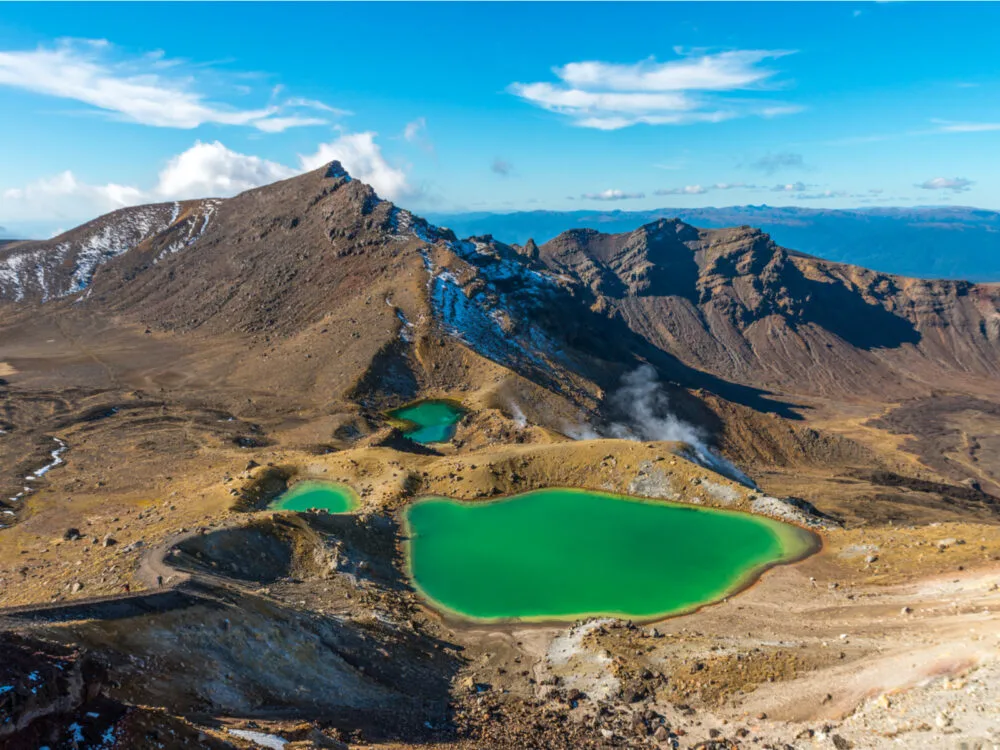
Milonk/Shutterstock
Tongariro National Park was one of the North Island go-to places for the Lord of the Rings set. Peter Jackson used the area for something as minor as showing Gollum catch a fish or passing by some ruins to critical settings like Mount Doom in Mordor.
The highlight of the whole area is Mount Ngauruhoe which was Mount Doom in the movie.
This mountain made the perfect choice because it is a giant 2,000-year-old mound of ash. The view at the top is unbelievable, but you have a challenging hike ahead of you, pulling your feet out of collapsing ash to get the view.
2. Mangawhero River
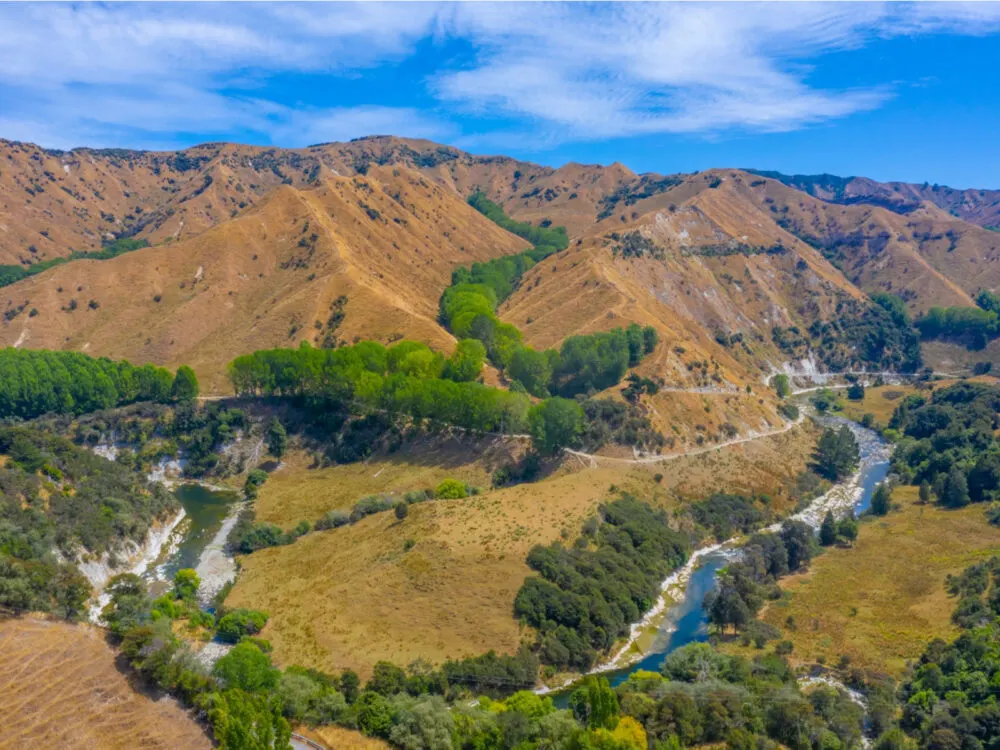
trabantos/Shutterstock
The Mangawhero River was the setting for Ithilien, the last area before reaching Mordor. You may remember the stunning scenery around Gollum when he caught a fish in the river.
The river area was briefly utilized as a setting in Mordor when Sam and Frodo passed a ruined column.
3. Whakapapa Ski Field
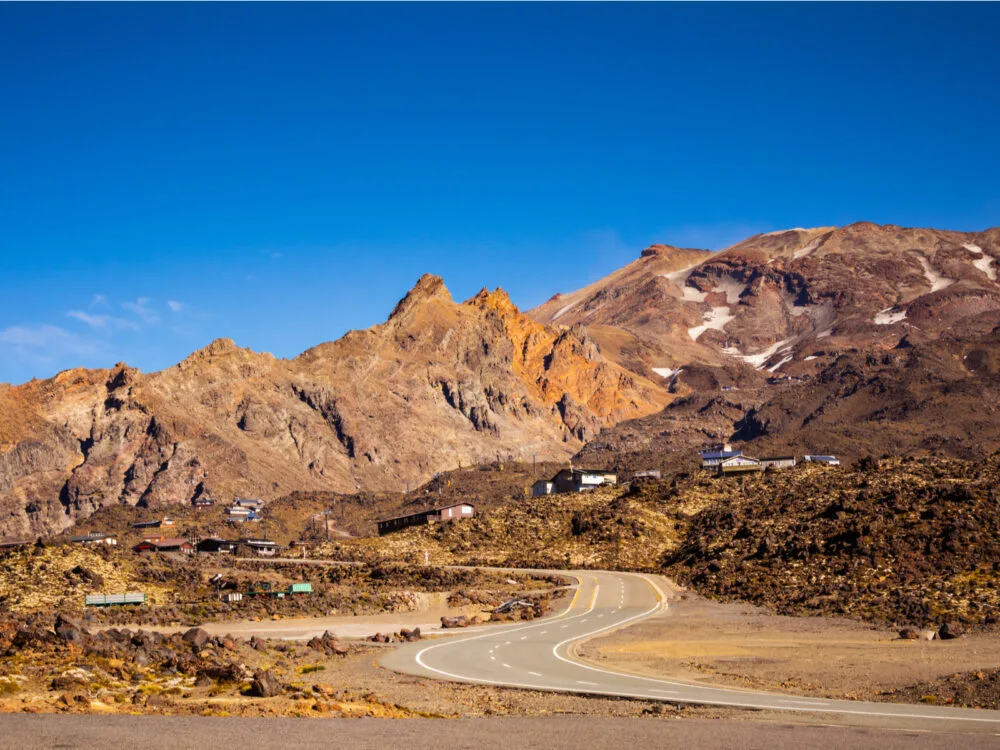
Scapigliata/Shutterstock
You may remember one of the key scenes in the beginning that sets up the whole story. Isildur cuts off Sauron’s finger, which frees the ring. The Whakapapa Ski Field is the actual location where the battle happened.
Likewise, as the trilogy closes, Sam and Frodo catch Gollum here. The striking, craggy set looks like the same place where Sauron lost the ring because the location is the same.
4. Tukino Ski Field & Mt. Ruapehu
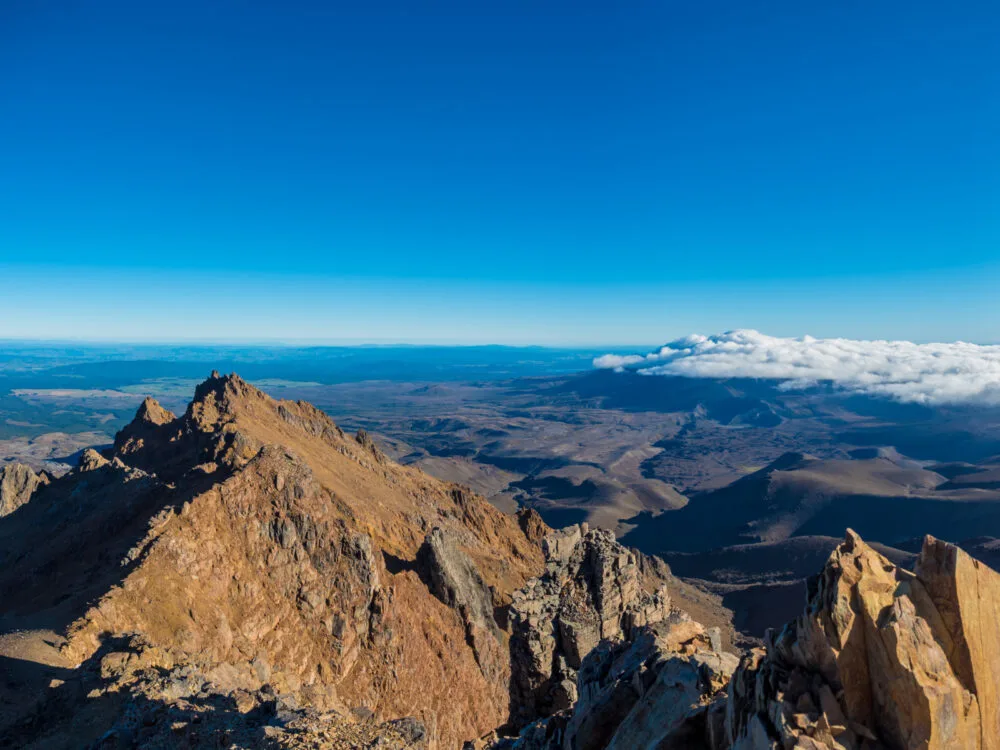
TristanBalme/Shutterstock
You may remember from the films that every location looks unforgettable and iconic. The Tukino Ski Field and Mt. Ruapehu made the perfect choice for the gates of Mordor when Frodo, Sam, and Gollum looked over the area before beginning their treacherous climb.
5. Farm Land – Hobbiton
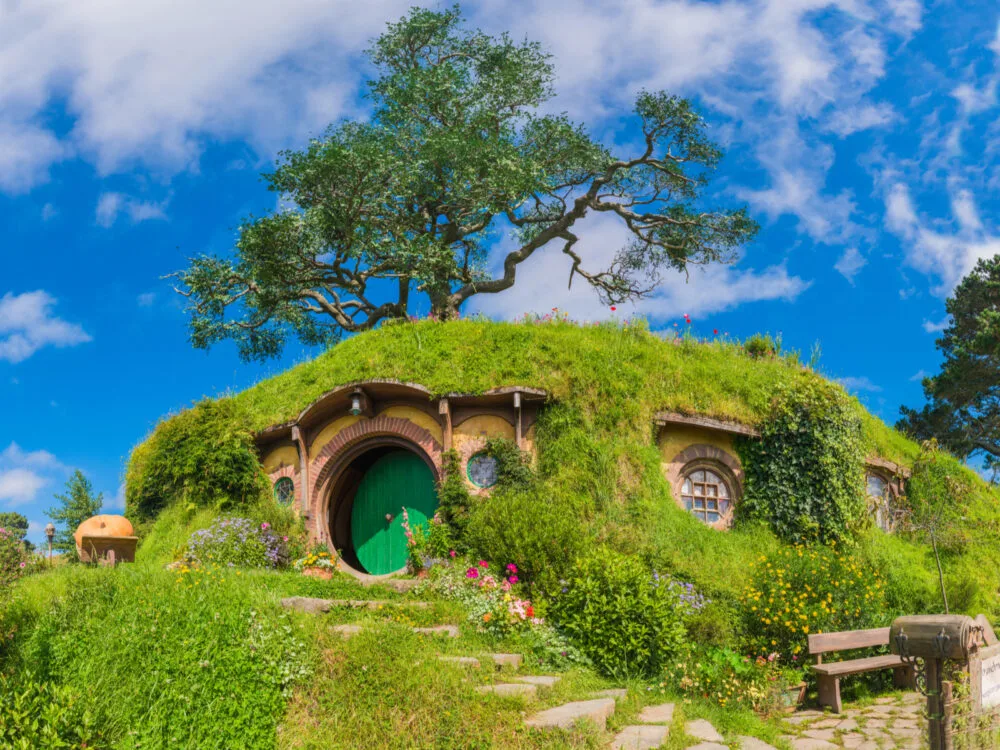
superjoseph/Shutterstock
As you can tell by the name, a lonely bit of farmland in the middle of nowhere contains one of the most memorable and magical places in Lord of the Rings—Hobbiton. The original set from Fellowship of the Ring is long gone.
However, tours started due to demand, and the Hobbit movies went back to the same location and rebuilt Hobbiton down to the most minute detail. Now you can tour the real Hobbiton used in the movies, and even stop by the local pub.
6. Mount Victoria

EA Given/Shutterstock
One of the more memorable parts of the first film, the Nazgul, had a nerve-wracking scene shot on Mount Victoria. You may remember the scene when the hobbits hid from the Nazgul under tree roots shortly after departing Hobbiton.
7. Pinnacles Track, Putangirua Pinnacles, & Aorangi Forest Park
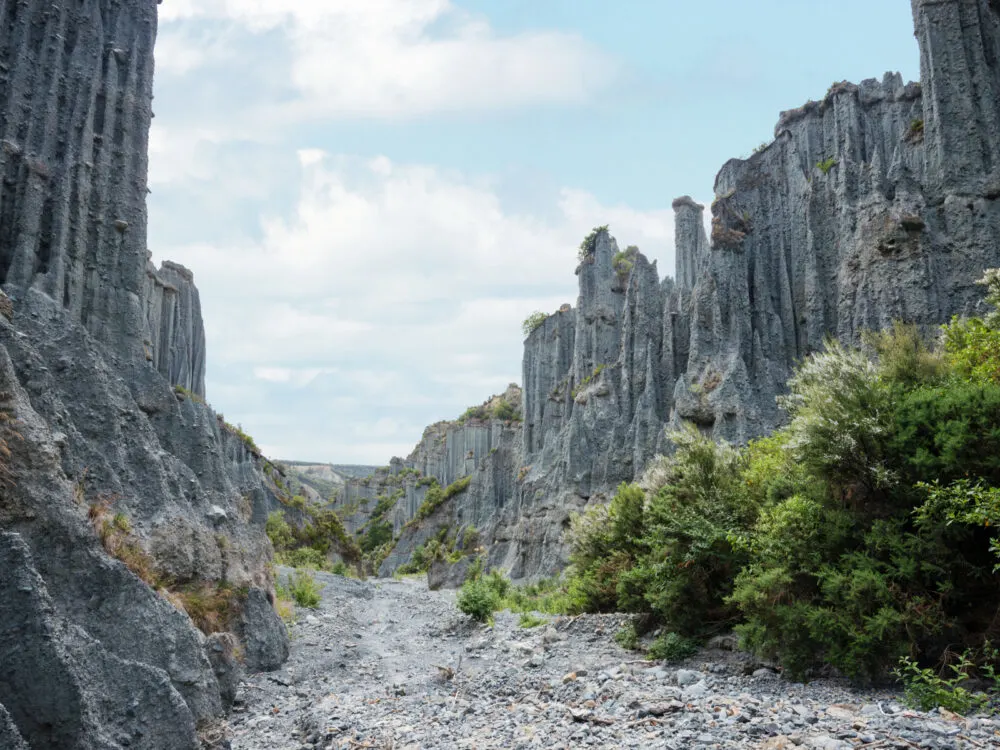
Ventura/Shutterstock
As a king, Aragorn had an unfortunate problem blocking his invasion of Mordor, no army. Putangirua Pinnacles is the location where Aragorn, Legolas, and Gimli travel through the paths of the dead.
You may remember that Aragorn, the heir of Isildur, is the only person who can lift the curse on the army of the dead if he can convince the dead to fight.
8. Kaitoke Regional Park, Wellington
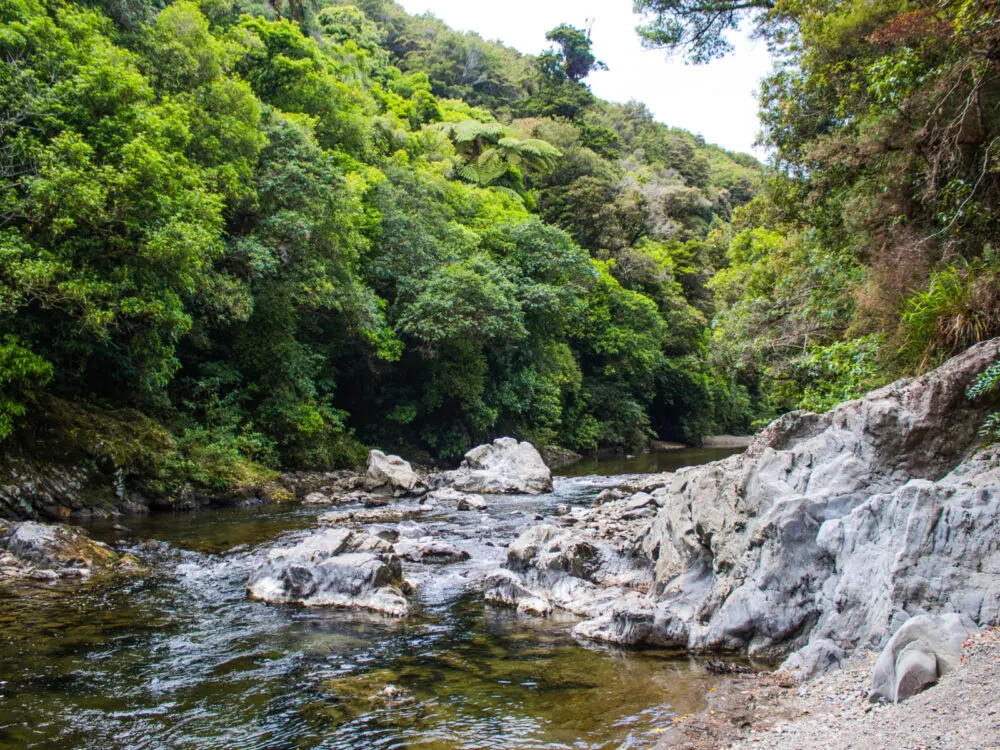
Viktor Hejna/Shutterstock
Just outside of Wellington, the Kaitoke Regional Park made the perfect location to shoot in to portray Rivendell for certain scenes. Peter Jackson used several locations as points in and around Rivendell.
The winding woods with lush, verdant trees worked extremely well as a plausible home for the most dominant elves in Middle Earth. Hikers love visiting the park.
9. Mount Owen, Kahurangi National Park
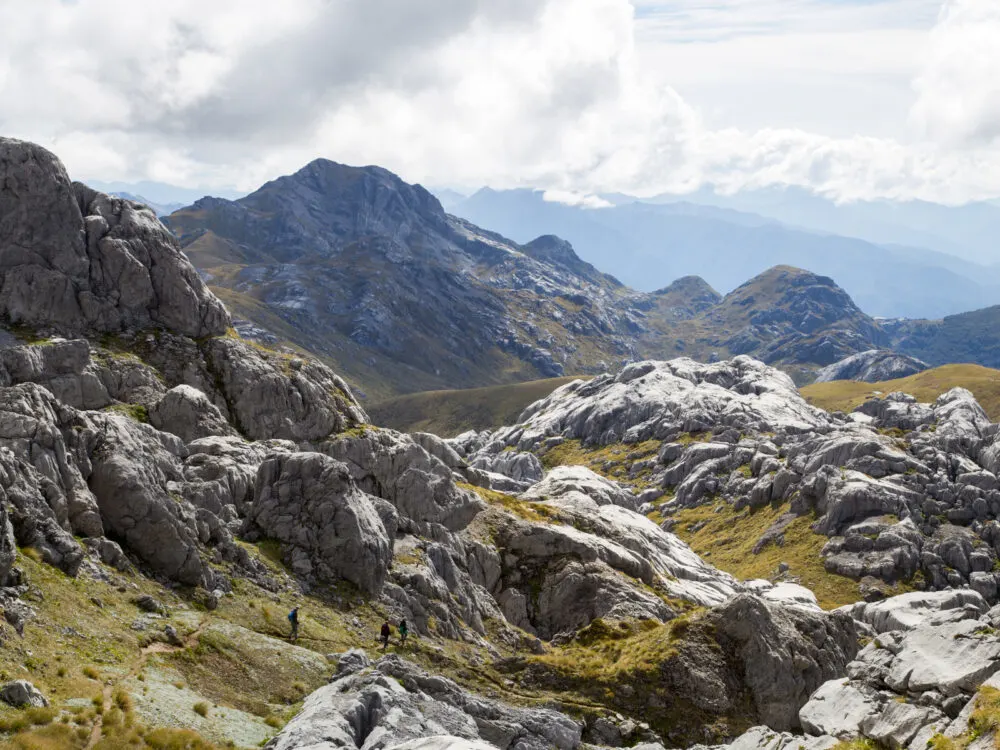
Oliver Foerstner/Shutterstock
Dimrill Dale and the mines of Moria is another location that no one could forget. Moria is where the group loses Gandalf to a giant fiery demon called a Balrog.
While the cave was a CGI masterpiece for the time, Mount Owen is the area where the group gets away from Moria after soul-crushingly watching Gandalf get dragged down an endless pit.
10. Mount Olympus/Boulder Lake
Saruman was wielding all the magic at his disposal to terminate the group and retrieve the ring. The Mount Olympus/Boulder Lake area is where the Crebain, Saruman’s black crows searched for the Fellowship as they hid under a rocky outcrop.
11. Mount Gunn Near Franz Josef Glacier
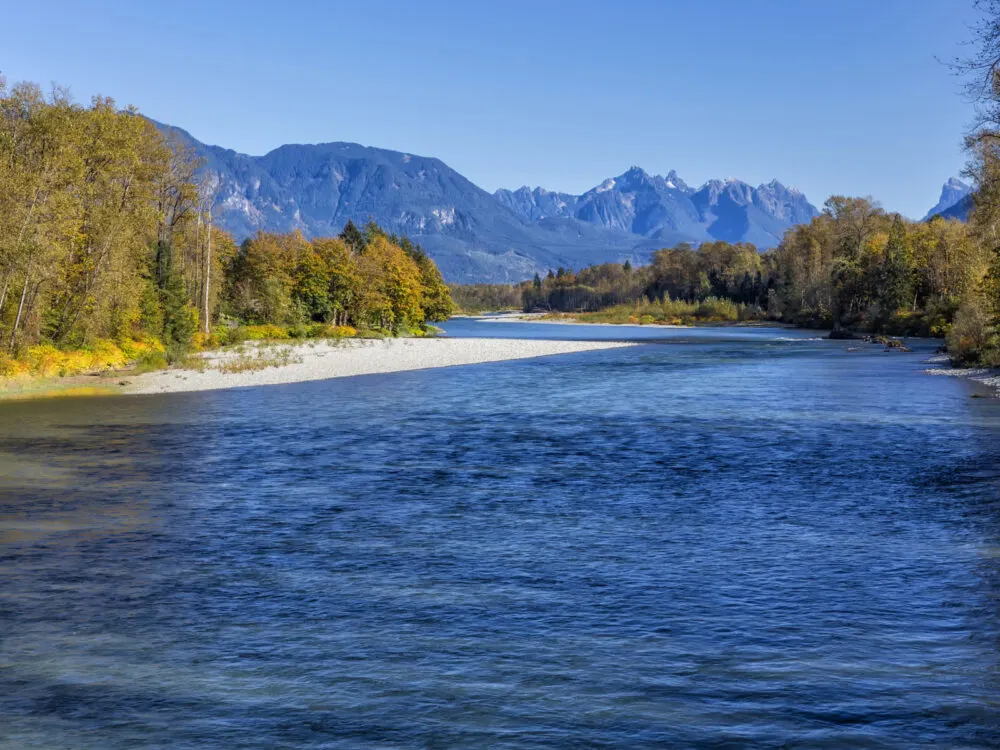
cpaulfell/Shutterstock
Ered Nimrais, or the White Mountains in real life, from The Two Towers, needed some awesome-looking mountains to light the fires that notified the Riders of Rohan to mount up and go to war.
The mountains have beacons all along the peaks and run from Gondor to Rohan. The area of Mount Gunn had the best look.
12. Mount Sunday, Near Ashburton Lakes
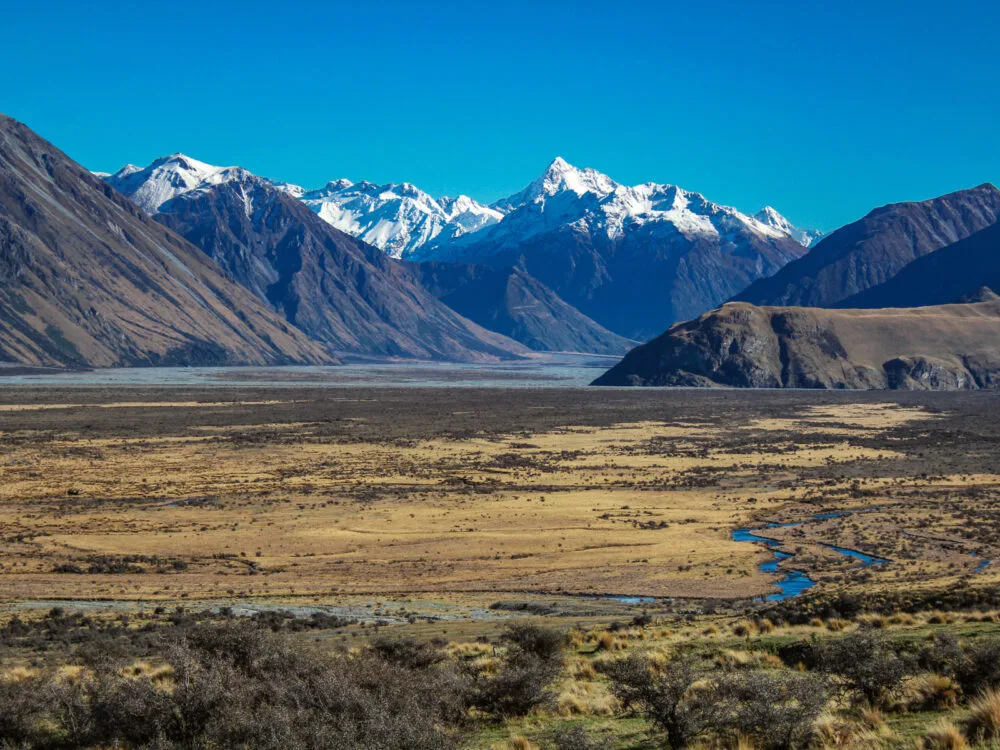
Joppi/Shutterstock
Mount Sunday serves as Edoras, the capital of Rohan. Workers constructed the set for filming and took everything down afterward. You can even park near the principal filming location on Hakatere Potts Road near Ashburton Lakes.
Then, you can enjoy a half-mile trek up to the top to get some stunning views, just like you’re in the movie. Don’t forget a high-quality camera. Buy one if necessary. You won’t regret the purchase.
13. Skippers Canyon
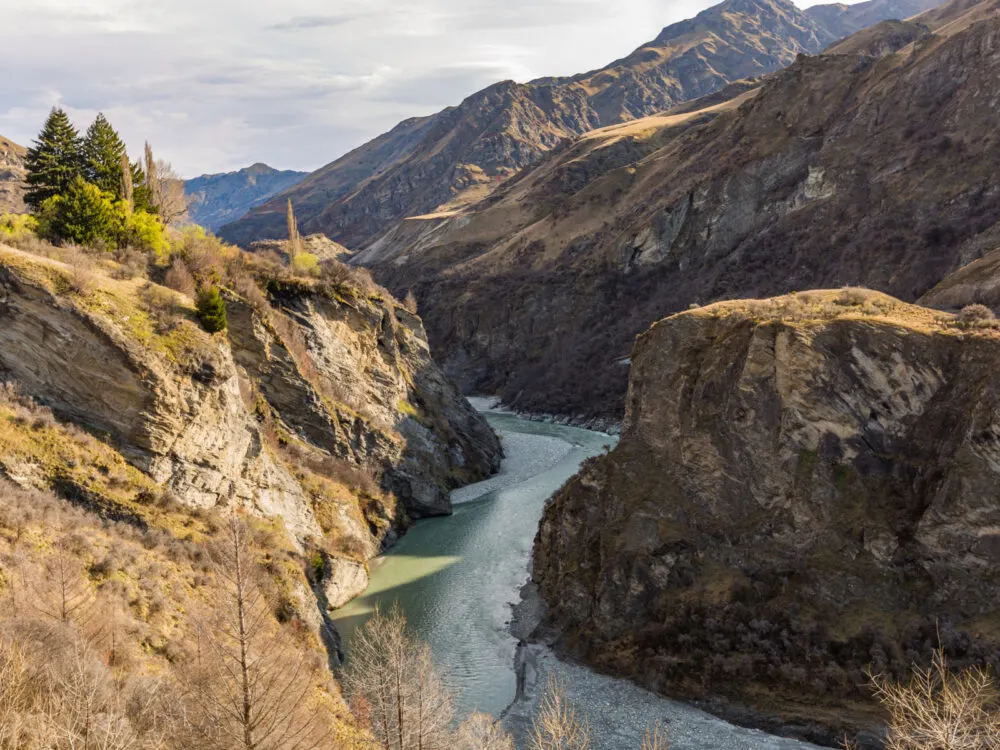
Naruedom Yaempongsa/Shutterstock
The place where the Nazgul finally felt defeat was in Skippers Canyon, where Arwen conjures a flood that wipes the ghostly hunters away still attached to their horses.
The scene may have been brief, but the Nazgul served as prominent, terrifying antagonists who haunted the hobbits for a considerable amount of time.
14. Rees-Dart Track & Mount Aspiring National Park

Fijalka/Shutterstock
Before Gandalf first arrives in Isengard and discovers Saruman’s treachery, having fallen to the eye of Sauron, he first travels along a gorgeous route with snow-capped mountains in the distance.
Peter Jackson seamlessly wove together Rees-Dart Track and Mount Aspiring National Park to provide the changing scenery on Gandalf’s scenic ride.
15. Twelve Mile Delta Area
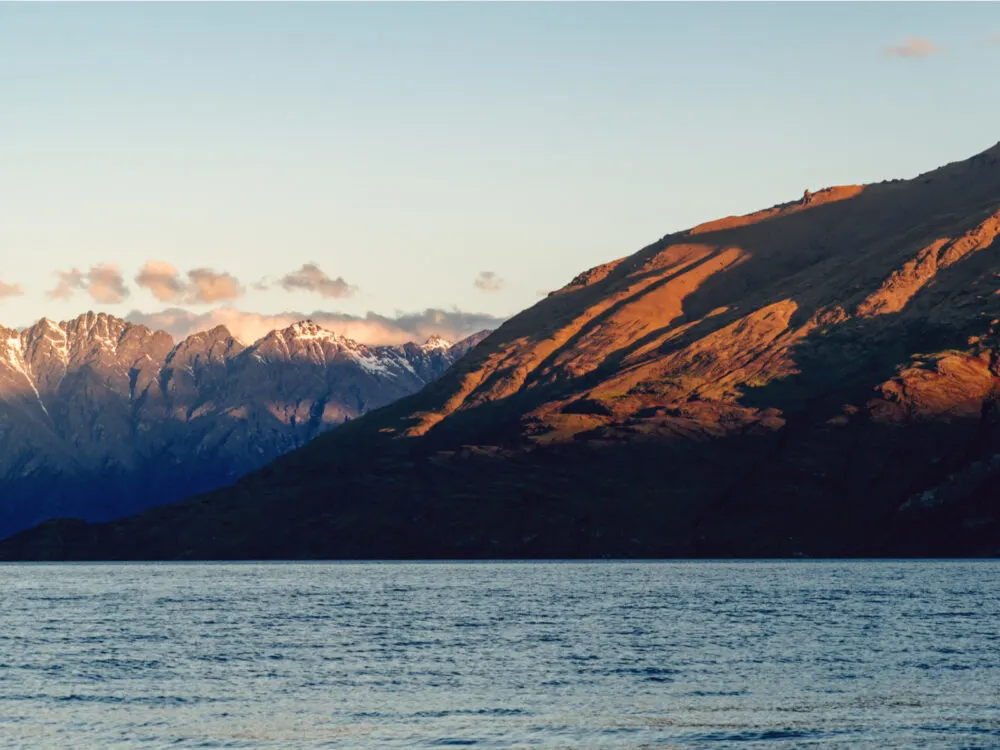
Donna Latu/Shutterstock
The Ithilien camp was another brief but memorable part of Frodo’s, Sam’s, and Gollum’s journey. The mountains needed a break, so the campsite is in a beautiful wooded area without peaks surrounding the cameras.
This part introduces Faramir and the Rangers of Gondor when they defeat an army with enormous oliphaunts.
16. Kawarau Suspension Bridge, Queenstown
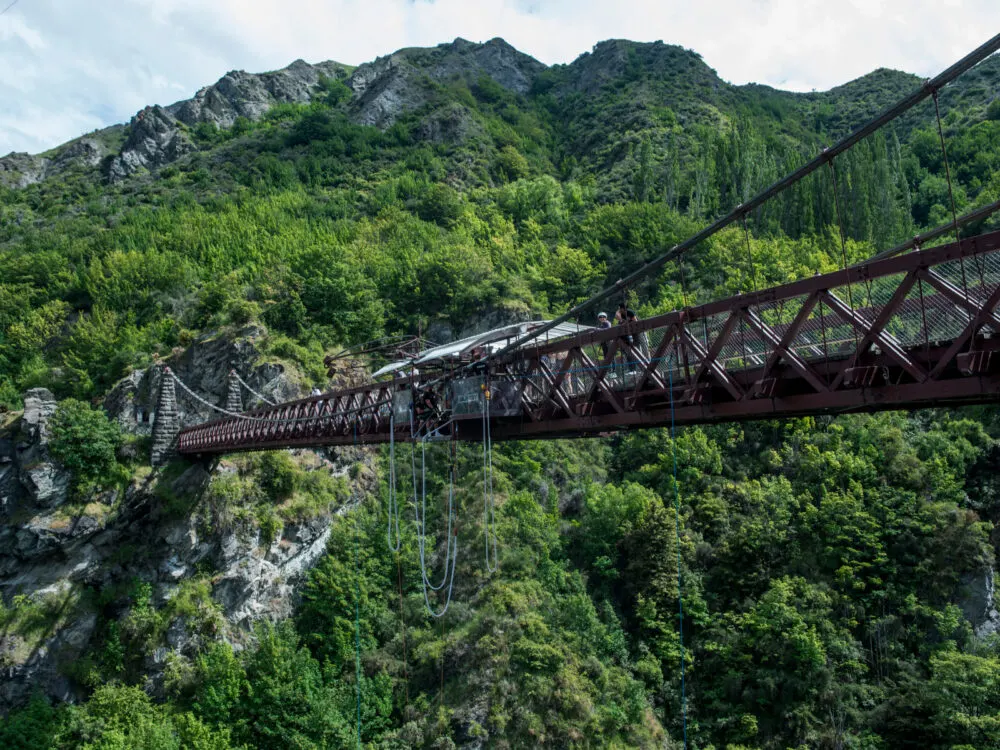
Zuhairi Ahmad/Shutterstock
In one of the most breathtaking scenes in the whole trilogy, even compared to all the amazing mountains, the Fellowship floats down the Kawarau River(real life) and arrives at The Argonath on the Anduin River.
One of the most unforgettable scenes of the first movie, The Argonath, also known as the Pillars of the Kings, are gigantic armored statues, each with an extended arm making a ‘stop’ gesture.
17. Lake Alta Track
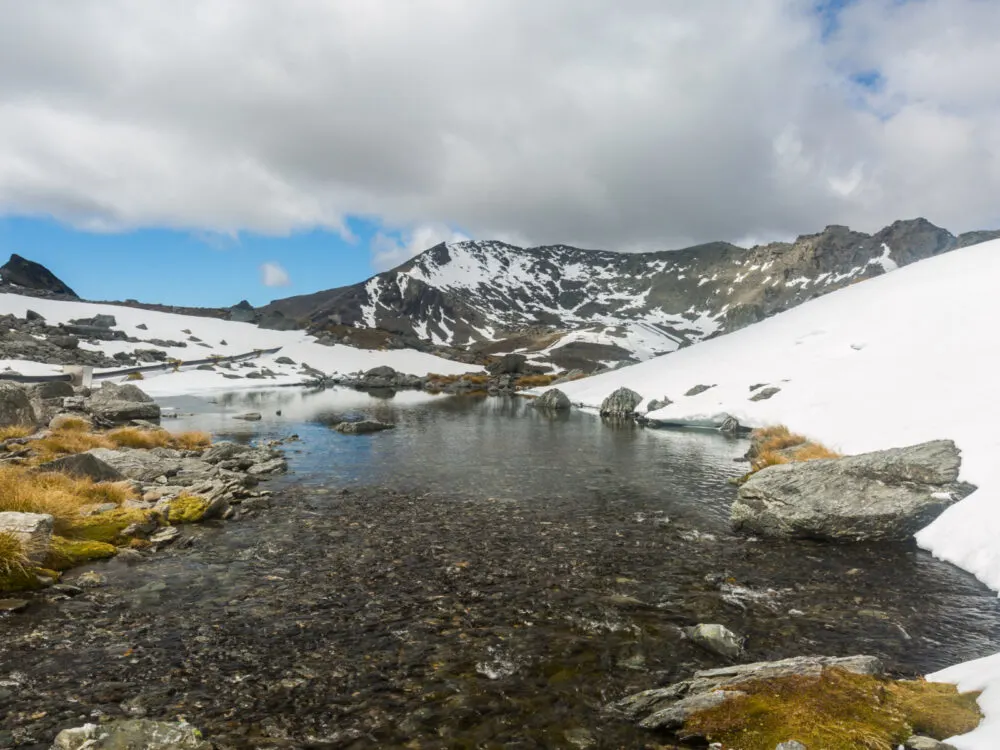
Naruedom Yaempongsa/Shutterstock
Earlier we had Dimrill Dale after the Fellowship got out of Moria, but the most memorable scene was probably directly after exiting the mines when everyone in the group was crying or looked devastated after the loss of Gandalf.
They exit surrounded by huge rock formations ringed by impressive mountains. The Lake Alta area is rock, pure air, and sometimes snow-capped peaks.
18. Mavora Lakes Conservation Park & Mavora Lakes Campsite
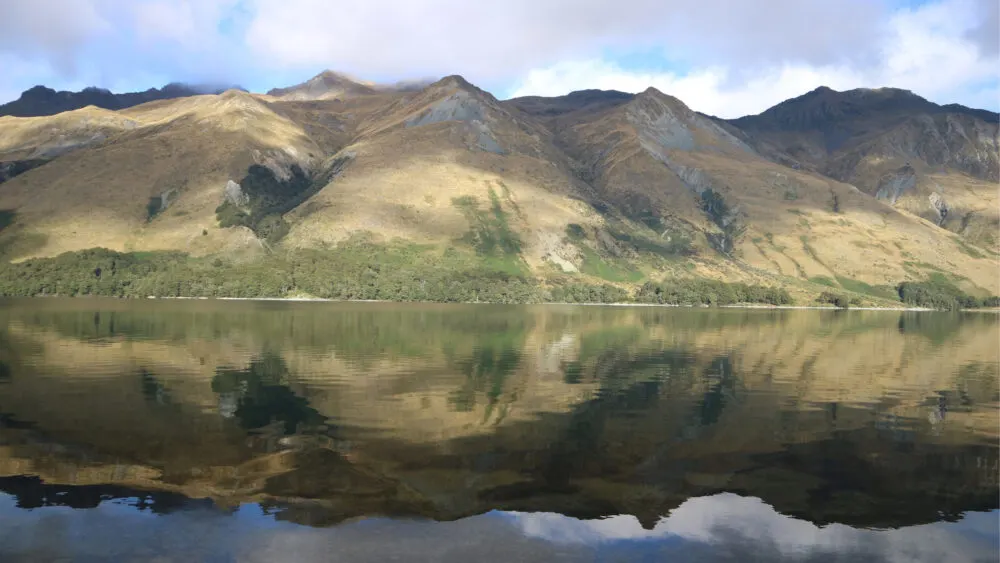
Wanderbeyond/Shutterstock
In the process of explaining this area, you have to understand that most of the Anduin River, heavily featured towards the end of Fellowship of the Ring, is all in this area in Southland.
There are lakes and rivers throughout the area, and mountains seem to form rings around every drop of water. Lush forests and grasslands abound, whose roots creep to the water’s edge for a drink.
You may remember the hobbits hiding from the Uruk-hai at the end of the Anduin at Nen Hithoel, or North Mavora Lake, the real name.
19. Mavora Lakes Park
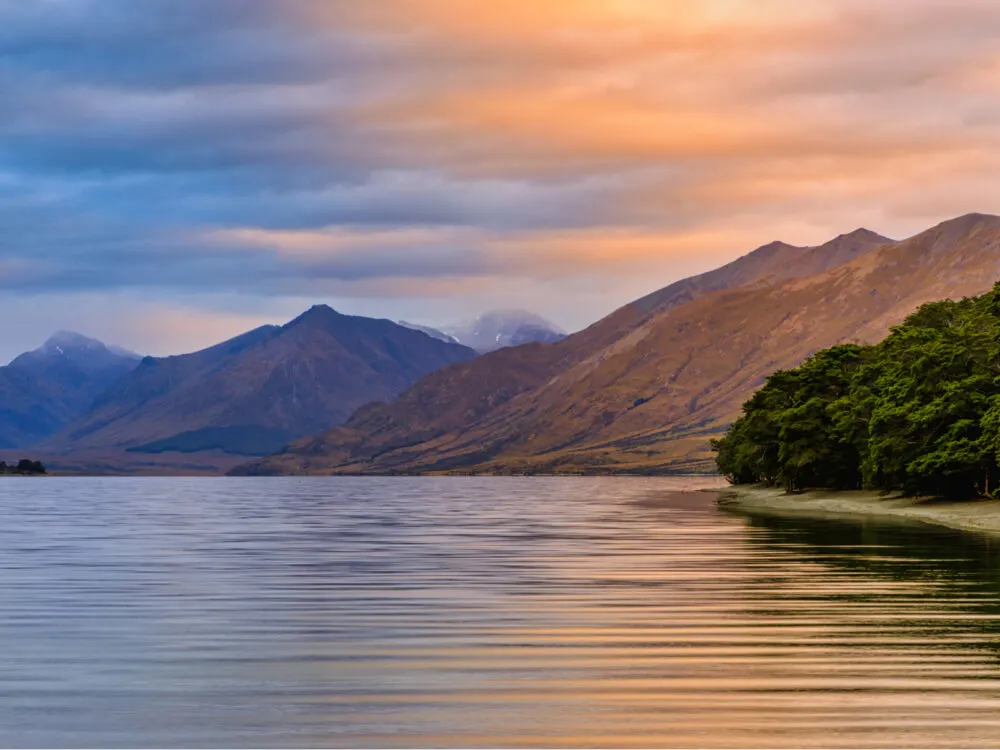
Will Dale/Shutterstock
The Mavora Lakes area also serves as Rivendell, the shiny, lush, and magical home of the elves. Around the bridge and South Mavora Lake, the Fellowship departs Lothlórien at the Silverlode and Anduin rivers with all their elven gifts and memories.
The same area also worked out perfectly for the edge of Fangorn Forest. You may remember that Aragorn, Legolas, and Gimli tracked Merry and Pippin to a pile of dead orc bodies left by the Riders of Rohan.
The terrified hobbits ducked and dived during the battle, managed to cut their bonds, and escaped into the dreaded forest. The grasslands giving way to lush forests worked perfectly for the night battle scenes.
20. Norwest Lakes Near St Paul’s Dome
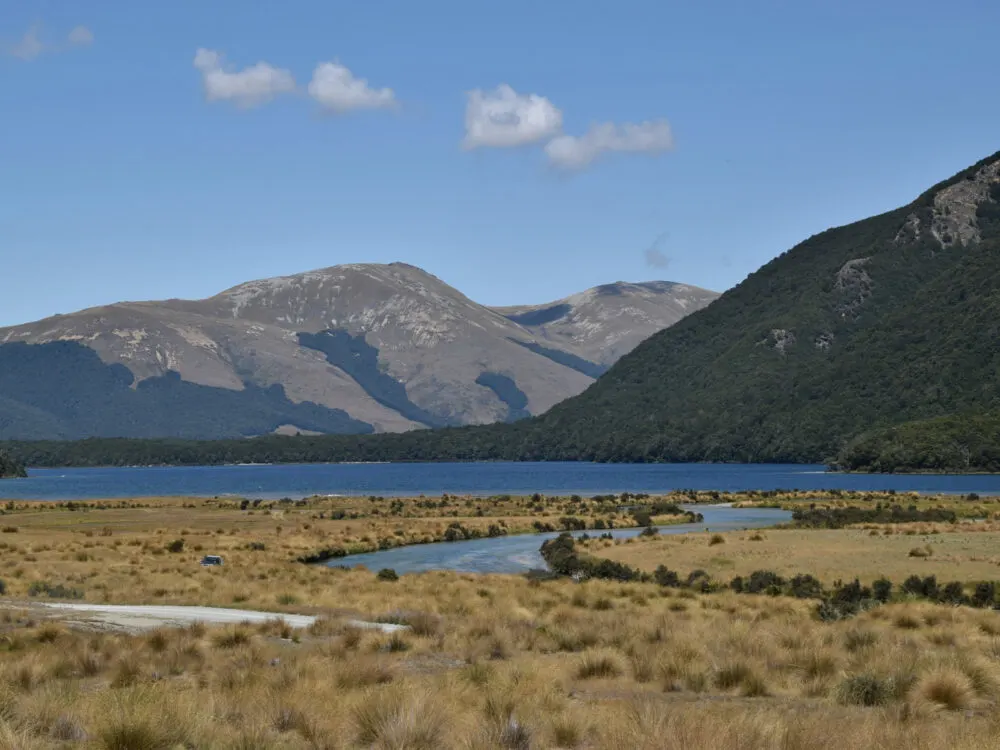
KCEmperor/Shutterstock
Mavora Lakes and the surrounding area served as the Fellowship’s departure South of Rivendell. Peter Jackson scouted all of the most beautiful spots that looked consistent with the Rivendell theme.
Then he made sure to bring the departure to life via the mountainous lakes in the Mavora area. And we think he really delivered.
21. Snowdon Forest
If you look at a map of where the Kawarau Suspension Bridge is, you’ll notice that for Bog Pine Paddock all Peter Jackson and company had to do was move up on the land by the river.
Here he shot another bit of Fangorn Forest when Gandalf the White re-emerges from his hiatus. The thick, ropy, knotted forests worked perfectly as the fantasy backdrop.
22. Fiordland National Park & Kepler Track
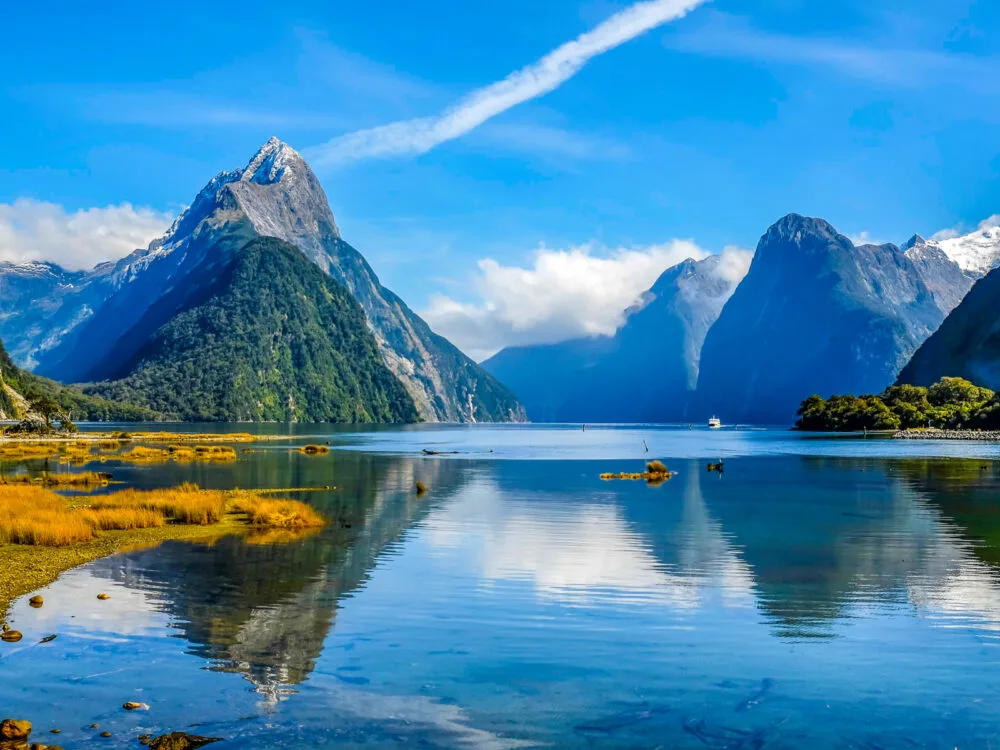
Ronald Nieves/Shutterstock
The Waiau River is another body of water that served as the Anduin River in the movies. This river appeared in the opening shots of Fellowship of the Ring.
Peter Jackson wanted a certain blend of the river, high walls, and forests, and he picked the right river.
The lush green slopes and walls served perfectly by using New Zealand’s natural beauty to look exactly like so many people envisioned the best parts of Middle Earth would look.
23. Fiordland National Park, Kepler Mire
You may remember the Dead Marshes from the films where Frodo falls under the spell of a spirit, but Gollum saves him. Kepler Mire made the perfect location with its propensity toward fog and low cloud cover.
The crew hardly had to do anything to make the bog look like a creepy place full of devious spirits just below the water’s surface.
Fiordland also has the Kepler Track, which makes for some scenic hiking. There are gorgeous waterfalls, mountains, and Lake Manapouri, all in the local area.
Things to Consider
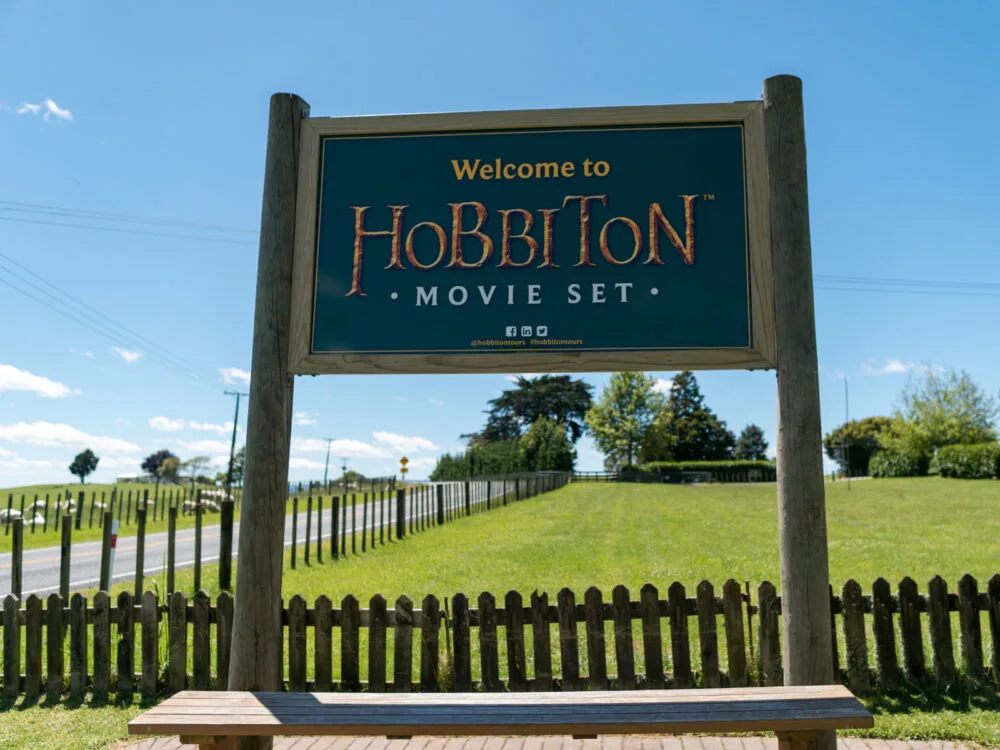
Tomas Bazant/Shutterstock
Depending on which film location you want to visit in New Zealand, the things to consider could get quite technical. If you book a tour to Hobbiton, how most people go, you only need to bring yourself, and a camera is a good idea, along with enough money to enjoy yourself.
If you have to visit New Zealand before you can visit Lord of the Rings filming locations, remembering your passport and relative travel documents is a given.
Lastly, especially on the South Island, New Zealanders love to say things like, “if you don’t like the weather, wait five minutes.” And we think that’s strangely true.
Frequently Asked Questions
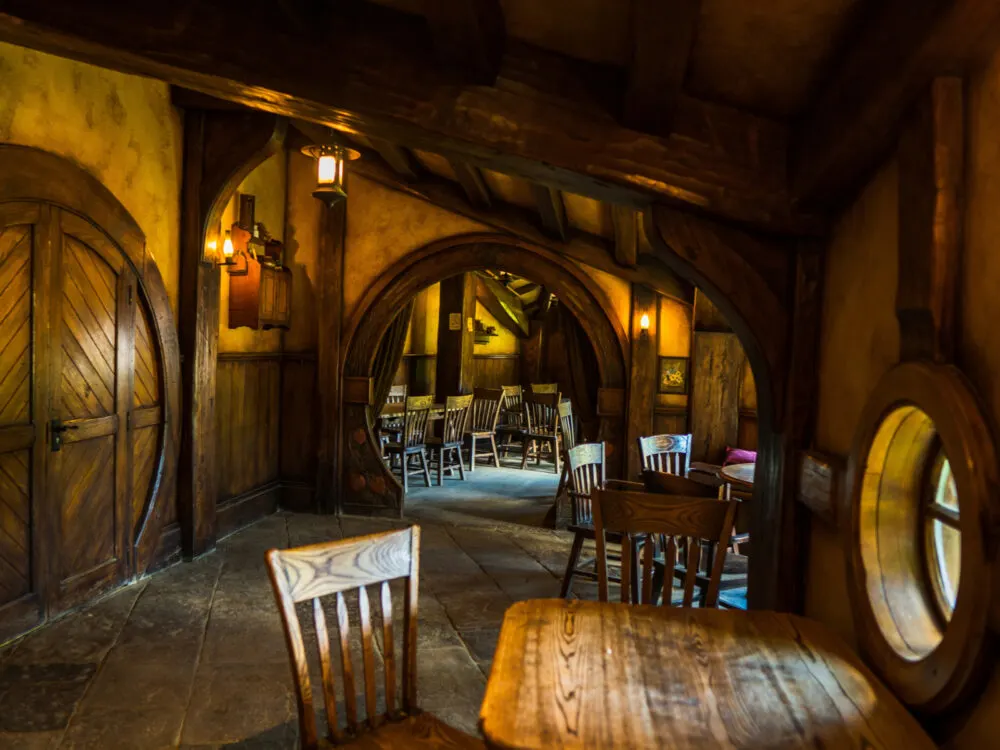
Kim Howell/Shutterstock
Do you still have questions about the locations where Lord of the Rings was filmed? We have answers.
Where is the Lord of the Rings filmed?
Many locations in New Zealand served as the set for Lord of the Rings. New Zealand has two primary islands, North Island and South Island. The South Island is more picturesque than the North Island.
The director, Peter Jackson, a native of New Zealand, used the North Island for a handful of sets, but he chose the South Island for most of the visually stunning scenes that wowed audiences two decades ago, and still inspire awe today.
Where were the mountain scenes in Lord of the Rings filmed?
The Lord of the Rings filming locations went on and around a lot of mountains during the trilogy on both the North and South Islands. The bulk of the scenes came from the South Island.
To broadly state the areas, the filming locations were the Tongariro National Park, Kahurangi National Park, West Coast region, Hakatere Conservation Park, Otago region, and Southland region.
Where is Minas Tirith filmed?
Not many people know that Minas Tirith, the capital of Gondor, was primarily a miniature scale model with great attention to detail. Mont Saint-Michel in Normandy, France, was the inspiration for the look of Minas Tirith.
For filming scenes, the crew converted the set from Helm’s Deep in the area of the White Mountains because the look was mostly right, and the set already existed.
Where is Mordor in real life?
The most noticeable feature in Mordor, Mount Doom, was Mount Ngauruhoe in Tongariro National Park, New Zealand in real life. However, other spots in New Zealand served as some specific spots in Mordor.
Tukino Ski Field and Mt. Ruapehu in Tongariro National Park served as the ominous and unforgettable gates of Mordor as Frodo, Sam, and Gollum get a view before finding another way inside.
Where is Rivendell in real life?
Peter Jackson used several locations to portray Rivendell the way he imagined. Wellington and the Kaitoke Regional Park nearby served as part of Rivendell.
But the winner, by far, had to be the Mavora Lakes area. The area also became sets for South of Rivendell, but the whole area shares the same look.
See the Lord of the Rings Filming Locations for Yourself!
Frankly, I could not be attempting to answer anything more subjective. Some people love rivers and forests, while others crave snow-capped rugged mountains.
I think that New Zealand never looked better than when Peter Jackson shot the group tearfully exiting the mines of Moria around Lake Alta.
The one clear thing is that whether you prefer Otago or Southland, New Zealand’s South Island is the place to go to re-experience the stunning beauty portrayed in Lord of the Rings. Happy travels!



